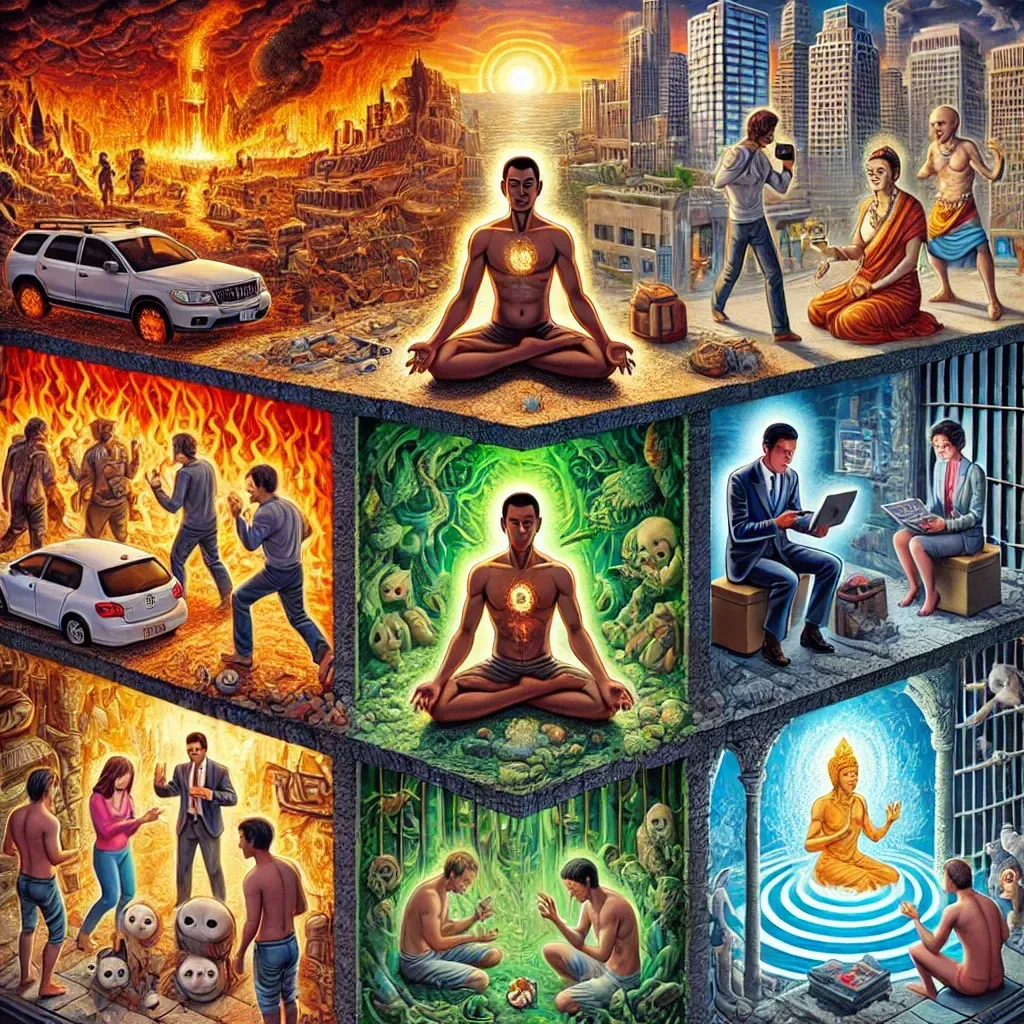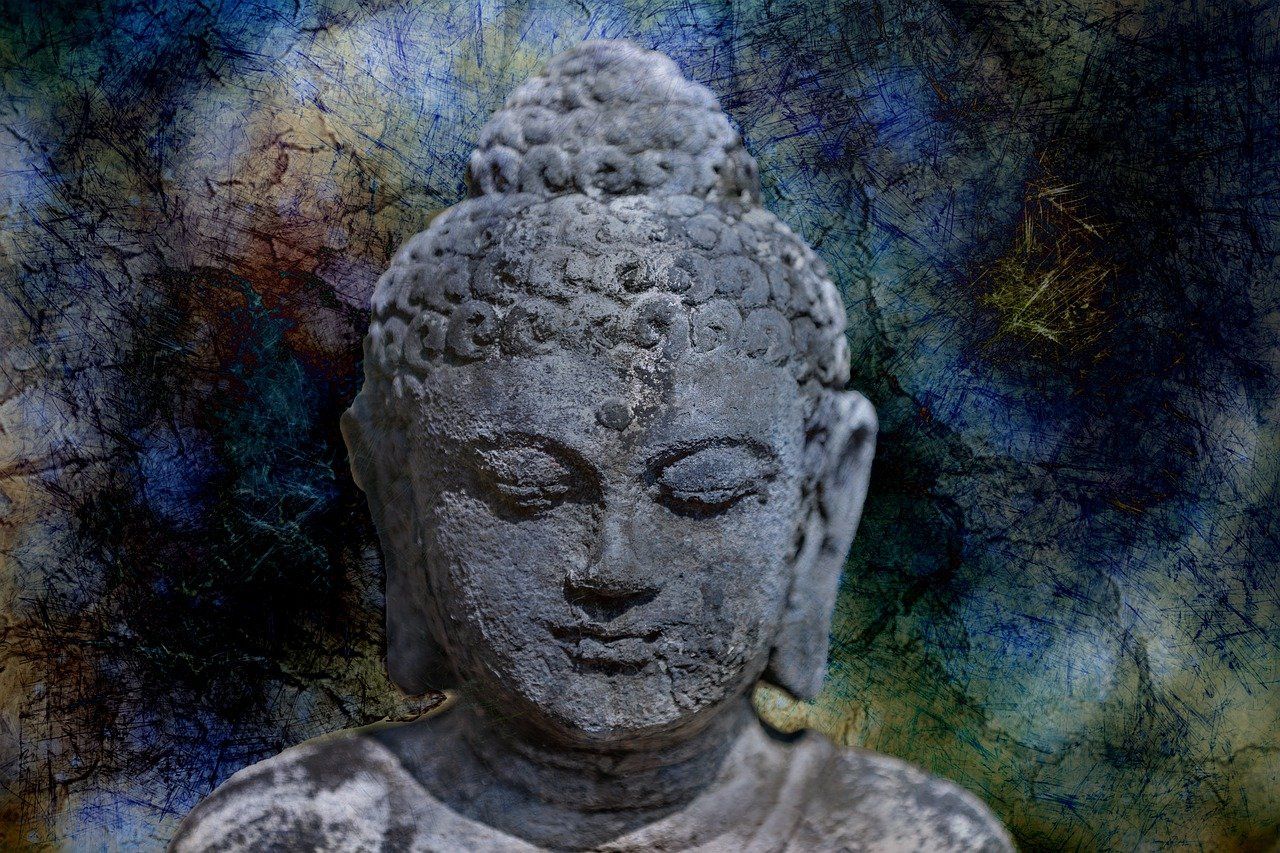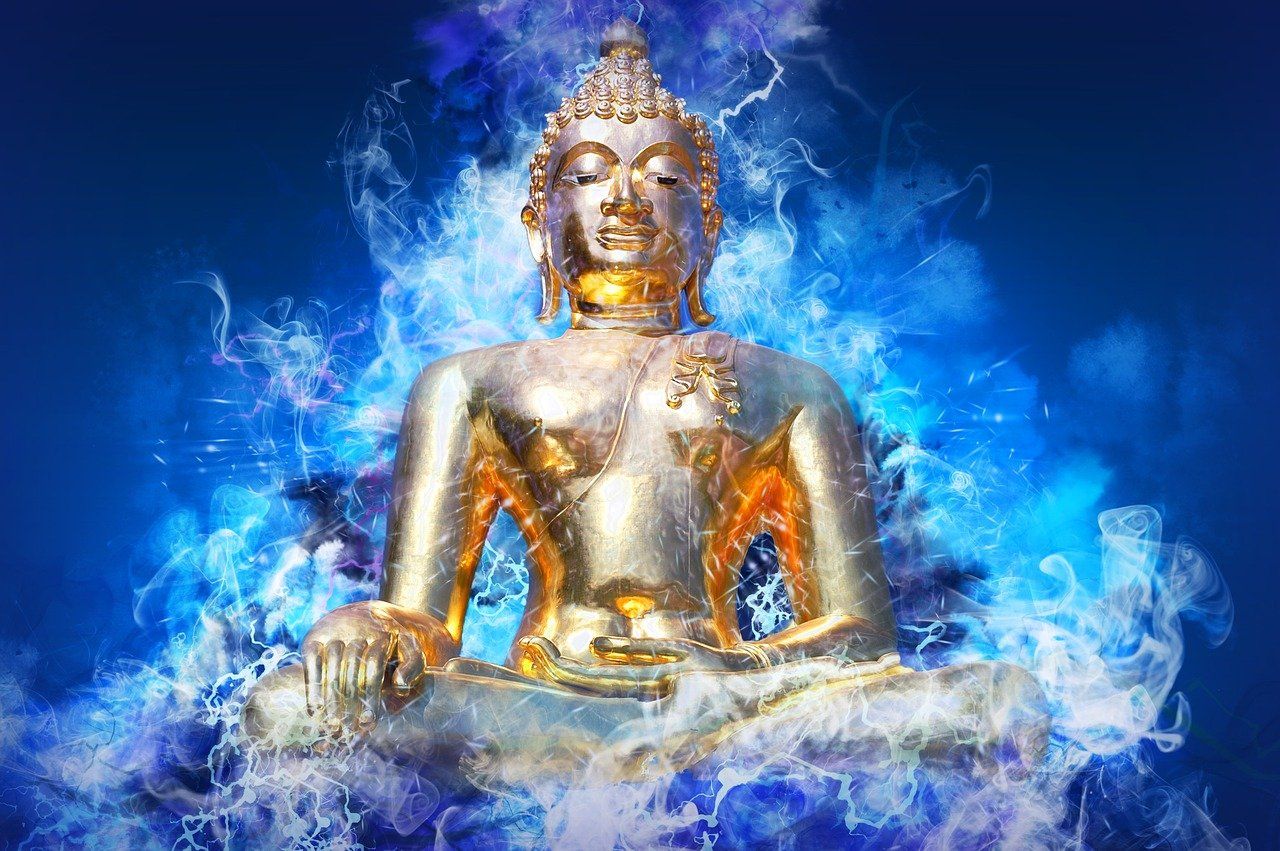The Way of Meditation Blog
Bringing Ancient Wisdom Into The Modern World
Scientists Say Time Travel Is Possible Through Parallel Universes
Brendan Murphy • April 16, 2016
Time Travel Through Parrallel Universes
On August 10, 1901, two Oxford professors, Anne Moberly, the principal of St. Hugh’s College, and Eleanor Jourdain, the vice-principal, were wandering, lost, through the garden of the Petit Trianon at Versailles when they were both overcome with sudden feelings of gloom, depression, and unease, though they said nothing of it to one another at the time, it became one of the strongest reports of time travel ever talked about.
Suddenly the scenery seemed somehow abnormal, lifeless, and unreal. Two men in “long greyish-green coats with small three-cornered hats” suddenly appeared and directed the women to the Petit Trianon. They strolled past an isolated cottage where a woman and a 12- or 13-year-old girl were standing at the doorway, both wearing white kerchiefs fastened under their bodices. Jourdain would later write that “both seemed to pause for an instant, as in a motion picture.”
Suddenly the scenery seemed somehow abnormal, lifeless, and unreal. Two men in “long greyish-green coats with small three-cornered hats” suddenly appeared and directed the women to the Petit Trianon. They strolled past an isolated cottage where a woman and a 12- or 13-year-old girl were standing at the doorway, both wearing white kerchiefs fastened under their bodices. Jourdain would later write that “both seemed to pause for an instant, as in a motion picture.”
The two continued on their way and soon reached a pavilion that stood in the middle of an enclosure. A sinister-looking man was sitting outside the pavilion, his face repulsively disfigured by smallpox, wearing a black cloak around his shoulders and a slouch hat—bizarre dress for the period and the weather. He turned to look in their direction though seemed almost to stare through them, not responding to their presence. Still, it was enough to make them feel extremely uncomfortable and the two professors walked on in silent unease until they reached a small terraced country house. A lady was sitting in full view on the lawn with her back to the house, though bizarrely, only one of the pair saw her despite both being keenly on the lookout for someone to ask for directions.
The woman, oddly dressed for the period in a summer dress with a long bodice and a very full but short skirt, held a large sheet of paper or cardboard in her hand and seemed to be working at a drawing. She had a pale green fichu or kerchief draped around her shoulders, and a large white hat covered her fair hair. As Moberly and Jourdain continued on, a young man, again oddly dressed, ran up to them and urgently offered them directions towards the Petit Trianon which they eventually located and entered, finding themselves in the midst of a wedding party wherein the participants were dressed in the garb of 1901, their time.
On subsequent trips to the Petit Trianon gardens the women found to their bafflement that a path they had walked down on their initial visit was now blocked by an old stone wall and had been for some time, evidently. Others no longer existed at all. Overall, the layout and dimensions of the grounds and buildings was completely and yet unaccountably different. The kiosk where the disfigured man sat, for instance, was no longer there.
The woman, oddly dressed for the period in a summer dress with a long bodice and a very full but short skirt, held a large sheet of paper or cardboard in her hand and seemed to be working at a drawing. She had a pale green fichu or kerchief draped around her shoulders, and a large white hat covered her fair hair. As Moberly and Jourdain continued on, a young man, again oddly dressed, ran up to them and urgently offered them directions towards the Petit Trianon which they eventually located and entered, finding themselves in the midst of a wedding party wherein the participants were dressed in the garb of 1901, their time.
On subsequent trips to the Petit Trianon gardens the women found to their bafflement that a path they had walked down on their initial visit was now blocked by an old stone wall and had been for some time, evidently. Others no longer existed at all. Overall, the layout and dimensions of the grounds and buildings was completely and yet unaccountably different. The kiosk where the disfigured man sat, for instance, was no longer there.
Home in England searching through historical records, the women concluded that they had perhaps been transported into Queen Marie Antoinette’s actual memory of the day (August 10, 1972) in which the sacking of the Tuileries and the massacre of the Swiss Guards had taken place—which accounted for the agitated manner of the people in the garden and general sense of oppressive gloom—Moberly and Jourdain’s descriptions of the layout of the gardens and the outbuildings were unknown by Versailles historians at the time but were later verified by painstaking search and scrutiny of obscure records of Louis XVI’s court, including wages he paid to gardeners and carpenters for specific projects.
String theorists and cyberneticians rejoice. Probably the most compelling element of this particular report is that people from the scene/period approached the two women and addressed them specifically, demonstrating that they were not merely invisible bystanders, but very much real and perceptible. Thus, the women had essentially been transported back in time; they weren’t just witnessing a scene as outside observers, they were there in the “past.”
In a 1957 paper on how the focus of our awareness creates our reality, Hugh Everett described “simple moments in time when it becomes possible to jump from one reality to another by creating a quantum bridge between two already existing possibilities.” One wonders if he had intended to include such possibilities as this time-warping one. Everett called these windows of opportunity “choice points.” He was, evidently, very much aware of the pluralistic nature of “reality.”
“If you were having a great time at the stroke of midnight on New Year’s Eve, 1999, you still are.”
From the many-worlds perspective, there is nothing particularly unusual about this event. The occultist might suggest that the women had essentially stepped into an Akashic record of the past. So, were these two women of the 20th century actually there in the 1700s? Taking the view of the many-worlds interpretation, in at least one version, they were (and still are), and perhaps somewhere in that “parallel reality” there exists a record in some long since departed soul’s tattered old diary of the two “oddly dressed” women who seemed out of place in the garden of the Petit Trianon that day as everyone bustled about hastily and on edge. There is no “separate time period,” simply a larger hyperdimensional reality that:
“…enfolds all time. If we could step into a hyperframe and see all instants through history frozen in time, we could choose a different one to step into and experience.”
Novikov applied the “principle of least action” to time travel, and, in what Strieber refers to as a “brilliant feat of mathematics” showed that the only movements through time satisfying this principle must be those in which the grandfather paradox cannot apply: “time travel will never cause a situation in which one of these paradoxes could take place.” If we were to access a particle stream moving faster than light, we could theoretically time-travel. As Einstein’s relativity showed, the faster something moves, the slower its subjective time passes, and if it were to break the light speed threshold, it would then be traveling backwards in time (time would “reverse”). Author Whitley Strieber asked in 1997 if the mind could somehow enable time travel. Strieber has had his own Versailles-like experiences, so he already knew the answer. It is “yes.” Government-backed research has validated this notion, as we will see.
Nobel laureate Frank Wilczek says, “We are haunted by the awareness that infinitely many slightly variant copies of ourselves are living out their parallel lives and that every moment more duplicates spring into existence and take up our many alternative futures.” Max Tegmark of MIT has expressed a virtually identical.
Kaku mentioned in his description of reality something called decoherence, a theory stating that though all these infinite parallel universes are possibilities, our universe’s wave function has decohered from them: it no longer vibrates in unison/in phase with them. It therefore no longer interacts with them. The result is that though we might coexist simultaneously with the wave function of inhabitants of other universes, we are no longer “in tune” with them.
Nobel laureate Steve Weinberg has also used the radio station in the living room analogy to describe our situation. This is a very apt analogy for the reality we find ourselves in. The decoherence interpretation of quantum mechanics leads to multiple universes/many worlds and avoids the postulation of a wave function collapse. For the time being we note that these parallel worlds postulated by the many-worlds interpretation of quantum mechanics, or “decohered universes” actually do, in rare circumstances, spill over into this world, so to speak.
String theorists and cyberneticians rejoice. Probably the most compelling element of this particular report is that people from the scene/period approached the two women and addressed them specifically, demonstrating that they were not merely invisible bystanders, but very much real and perceptible. Thus, the women had essentially been transported back in time; they weren’t just witnessing a scene as outside observers, they were there in the “past.”
In a 1957 paper on how the focus of our awareness creates our reality, Hugh Everett described “simple moments in time when it becomes possible to jump from one reality to another by creating a quantum bridge between two already existing possibilities.” One wonders if he had intended to include such possibilities as this time-warping one. Everett called these windows of opportunity “choice points.” He was, evidently, very much aware of the pluralistic nature of “reality.”
Events such as the Moberly and Jourdain incident
are familiar even to government-employed remote viewers. As we have seen and will see further, in quantum physics the past, present, and future are not clearly distinguishable from one another and research is ongoing into the effects the future has on the present (you read that correctly). In short, past, present, and future—all of them—exist now. In the words of physicist and string theory exponent Brian Greene:
From the many-worlds perspective, there is nothing particularly unusual about this event. The occultist might suggest that the women had essentially stepped into an Akashic record of the past. So, were these two women of the 20th century actually there in the 1700s? Taking the view of the many-worlds interpretation, in at least one version, they were (and still are), and perhaps somewhere in that “parallel reality” there exists a record in some long since departed soul’s tattered old diary of the two “oddly dressed” women who seemed out of place in the garden of the Petit Trianon that day as everyone bustled about hastily and on edge. There is no “separate time period,” simply a larger hyperdimensional reality that:
“…enfolds all time. If we could step into a hyperframe and see all instants through history frozen in time, we could choose a different one to step into and experience.”
Novikov applied the “principle of least action” to time travel, and, in what Strieber refers to as a “brilliant feat of mathematics” showed that the only movements through time satisfying this principle must be those in which the grandfather paradox cannot apply: “time travel will never cause a situation in which one of these paradoxes could take place.” If we were to access a particle stream moving faster than light, we could theoretically time-travel. As Einstein’s relativity showed, the faster something moves, the slower its subjective time passes, and if it were to break the light speed threshold, it would then be traveling backwards in time (time would “reverse”). Author Whitley Strieber asked in 1997 if the mind could somehow enable time travel. Strieber has had his own Versailles-like experiences, so he already knew the answer. It is “yes.” Government-backed research has validated this notion, as we will see.
Nobel laureate Frank Wilczek says, “We are haunted by the awareness that infinitely many slightly variant copies of ourselves are living out their parallel lives and that every moment more duplicates spring into existence and take up our many alternative futures.” Max Tegmark of MIT has expressed a virtually identical.
Kaku mentioned in his description of reality something called decoherence, a theory stating that though all these infinite parallel universes are possibilities, our universe’s wave function has decohered from them: it no longer vibrates in unison/in phase with them. It therefore no longer interacts with them. The result is that though we might coexist simultaneously with the wave function of inhabitants of other universes, we are no longer “in tune” with them.
Nobel laureate Steve Weinberg has also used the radio station in the living room analogy to describe our situation. This is a very apt analogy for the reality we find ourselves in. The decoherence interpretation of quantum mechanics leads to multiple universes/many worlds and avoids the postulation of a wave function collapse. For the time being we note that these parallel worlds postulated by the many-worlds interpretation of quantum mechanics, or “decohered universes” actually do, in rare circumstances, spill over into this world, so to speak.
Written by Brendan D. Murphy
Excerpted from The Grand Illusion – Book 1
Brendan D Murphy is Co-founder of Global Freedom Movement
and author of the critically acclaimed “mind-blowing masterpiece” THE GRAND ILLUSION: A SYNTHESIS OF SCIENCE AND SPIRITUALITY
, Brendan D. Murphy is a leading expositor of the new paradigm of integrated science and spirituality/sovereignty, and has been referred to as the “Chomsky of the spiritual movement.”. He is also a passionate advocate of accelerated conscious evolution through sound-based DNA and kundalini activation.
Get A FREE
Guided Meditation Series
with Chad Foreman

In today’s fast-paced world, the mind often races, driven by the demands of work, family, and personal ambitions. Meditation is commonly seen as a practice to calm the mind, foster inner peace, and connect with deeper aspects of existence. Yet, one crucial element often overlooked is the state of the body, particularly the nervous system. Relaxing the nervous system isn’t just a preparatory step; it is foundational for unlocking the deeper states of awareness and tranquility that meditation promises. Drawing insights from my journey and teachings, we will explore why this is so vital and how it transforms the meditative experience.











